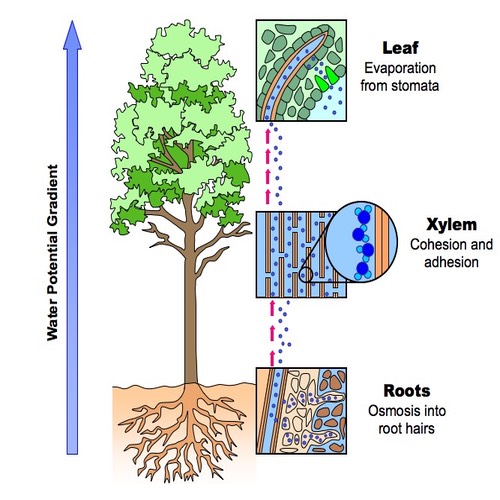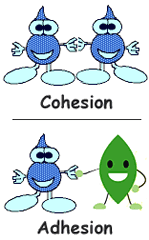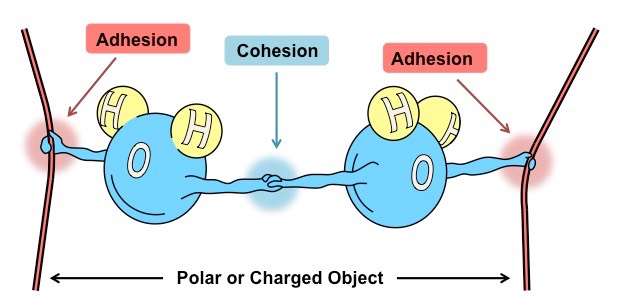This theory was proposed by Dixon according to this theory a number of forces responsible for upward movement of sap in plants. The most widely accepted theory for movement of water through plants is known as the cohesion theory.
Transpiration Pull
What is the driving force? According to the cohesion-tension theory, the driving force for water movement in the xylem is provided by evaporation of water from the leaf and the tension or negative pressure that results. Water covers the surfaces of the mesophyll cells as a thin film, adhering to cellulose and other hydrophillic surfaces. As water evaporates from this film, the air–liquid interface retreats into the small spaces between cellulose microfibrils and the angular junctions between adjacent cells.

Because the water column is continuous, this negative pressure, or
tension, is transmitted through the column all the way to the soil. As a result, water is literally pulled up through the plant from the roots to the surface of the mesophyll cells in the leaf.
How is the integrity of the water column maintained?
The ability to resist breakage of the water column is a function of the tensile strength of the water column. Tensile strength is a measure of
the maximum tension a material can withstand before breaking. Tensile strength is expressed as force per unit area, where the area for the purpose of our discussion is the cross-sectional area of the water column.
Cohesion
The force of attraction among the water molecule is called cohesion. It holds the water together and forms a solid chain like column within the xylem tube. The cohesion is due to the hydrogen bonding between water molecules.
Adhesion
The attractive force in between water molecules and wall of the xylem vessel is called adhesion. The water molecules remain adhere and form a column of water in the xylem tissue it helps the water molecules to creep up.


MECHANISM OF TRANSPIRATION PULL
Mesophyll cells
Water evaporates from the intercellular spaces of the leaves into the air. It removes water from the mesophyll cells. As the water moves out of the mesophyll cells their water potential and turgor pressure falls. It increases their suction pressure therefore cells withdraw water from deep mesophyll cells.
Xylem
The suction pressure reaches the parenchymatous cells. These cells withdraw water from xylem vessels. The greater water loss by transpiration greater will be the magnitude of force.
The loss of water from the xylem in the aerial part due to transpiration produces tension in the xylem and this tension is transmitted down the column of water in the xylem element through the stem, into the root and ultimately reaches to the absorbing region of the root. The water molecules move into the root from the soil.
Water column
Cohesive forces are present between the water molecules. These forces maintain the continuity of water column in the xylem. The magnitude of the forces are very large it may be up to 350 atmospheres this means that a force greater than 350 atmosphere is required to break the column of water the rising column of water is called as transpiration stream.